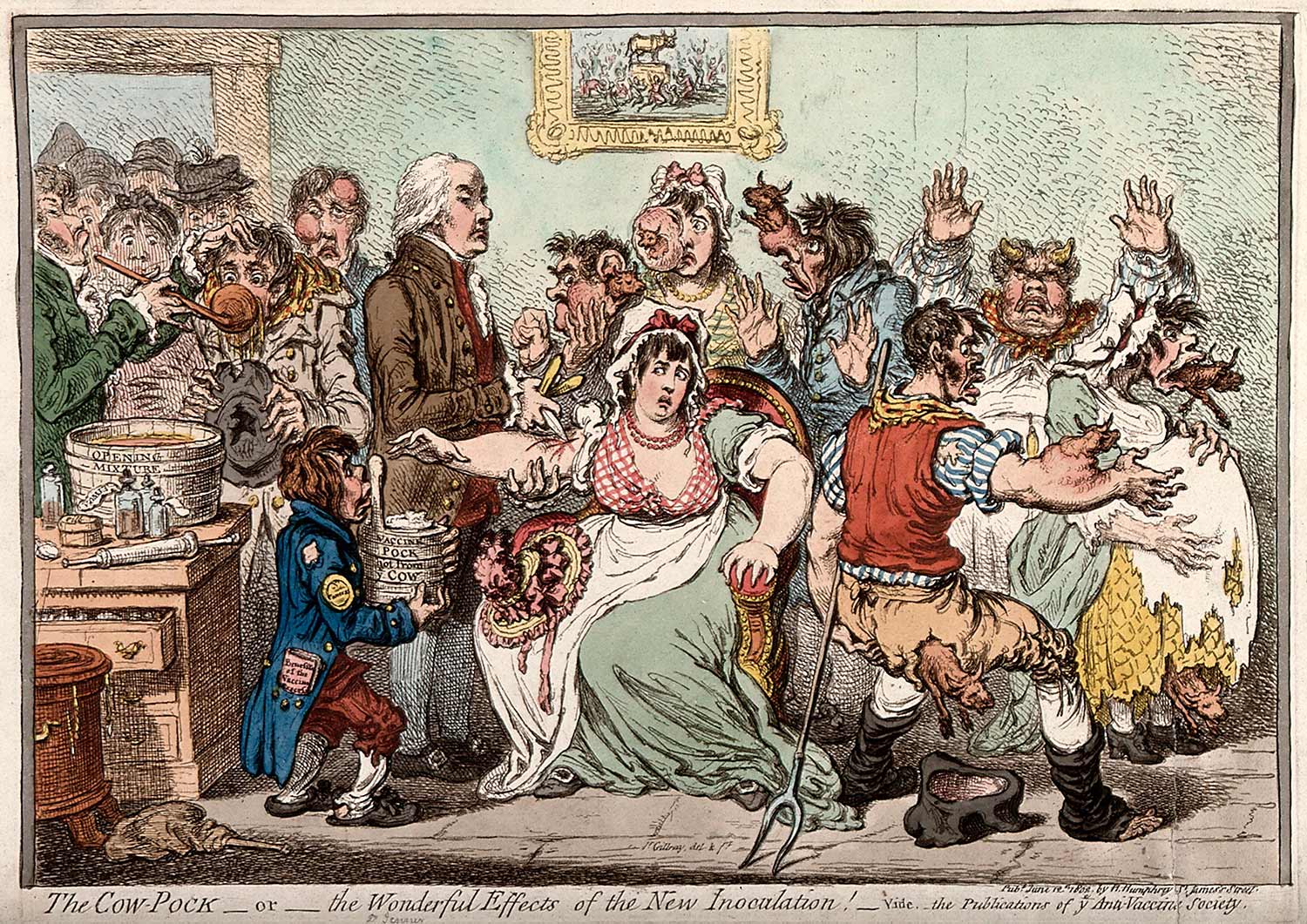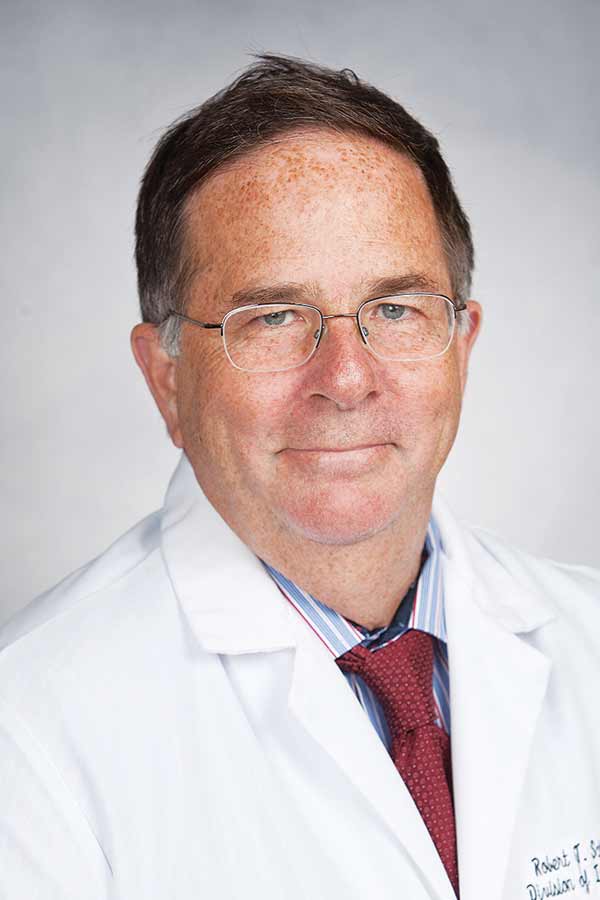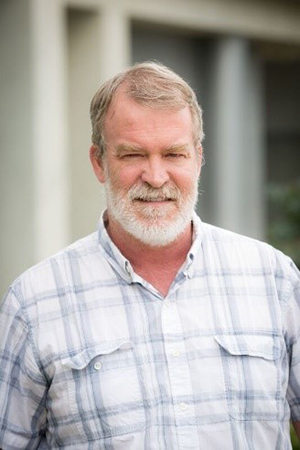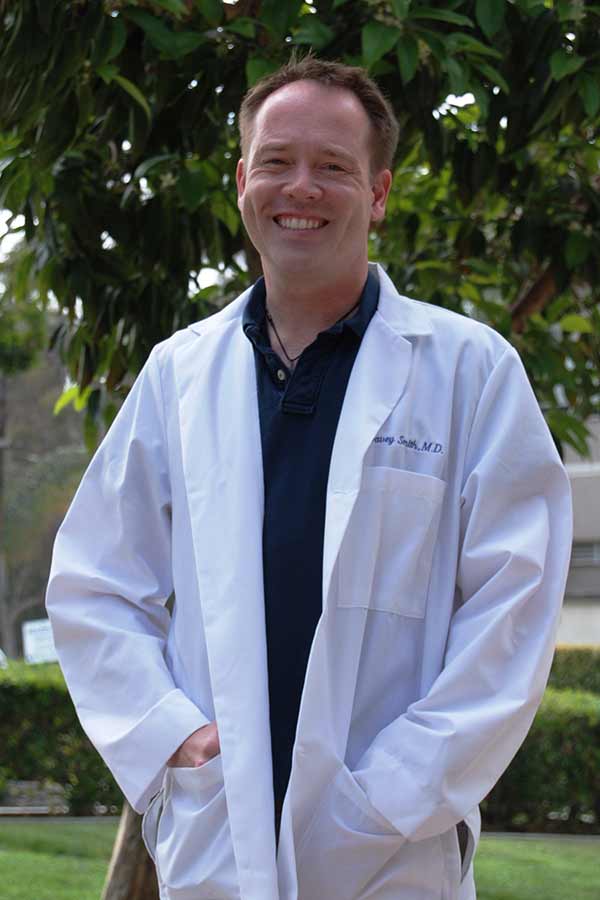
By:
- Scott LaFee
Published Date
By:
- Scott LaFee
Share This:

In this 1802 cartoon, English satirist James Gillray captures opponents’ belief that Edward Jenner’s new smallpox vaccine, introduced six years earlier, could induce the growth of cow parts in vaccinated recipients. The smallpox vaccine was derived from cowpox, a relatively benign viral cousin to smallpox that triggered a similar immune response. The cartoon was intended to both lampoon the most extreme anti-vaccination efforts and to illustrate ongoing social anxieties.
Charting Shots
The history of vaccines, including hesitancy, is pointedly and painfully familiar
Many medical advances lay at least partial claim to greatest of all time, from older achievements like anesthesia (1846) and antibiotics (1928) to more modern triumphs like organ transplants (1954), stem cell therapy (1970s) and artificial intelligence (21st century).
Vaccines often make these lists—they are both old and new—but they are also overlooked because their power is primarily in prevention, and a disease dodged is harder to count, though the World Health Organization estimates 2.5 million deaths are prevented each year due to vaccinations.
In the time of COVID, the importance of vaccines has never been more obvious or pressing. The SARS-CoV-2 virus has killed more than 4.5 million people worldwide in less than two years, more than 641,000 in the United States alone.

Dr. Robert Schooley
The debut of multiple effective vaccines has measurably reduced the death toll: A recent study estimated 279,000 lives have been saved and 1.25 million hospitalizations prevented by the COVID-19 vaccination campaign in the U.S.
And yet significant segments of the population continue to resist vaccination—and comprise the vast majority of current COVID-19 hospitalizations.
“Two primary themes run throughout the history of vaccine hesitancy, at least in terms of why some people fear or oppose them,” said Dr. Robert Schooley professor of medicine in the Division of Infectious Diseases and Global Public Health at UC San Diego School of Medicine and editor-in-chief of the journal Clinical Infectious Diseases.
“The first is the perception among some members of the public that vaccines cause more harm than the diseases they are intended to prevent, both individually and collectively. This misconception is closely tied to the second. Namely, that efforts to promote vaccines encroach on ‘personal freedom’ and endanger individual well-being. These objections often run counter to empirical evidence and reasoned logic, but they are real and they are persistent.
“And both themes are currently exacerbated by a systematic campaign to undermine trust of the scientific community for political reasons that range from efforts to discount the reality of climate change to the benefits of wearing masks to reducing the spread of respiratory diseases.”
Vaccines work
In the U.S., vaccines have rendered a number of diseases virtually non-existent, or at least no longer major public health threats. Polio is often cited. In the 1950s, one in 1,000 polio cases among U.S. children resulted in paralysis; in adults, it was one in 75 cases.
We are just a few generations removed from a time when polio outbreaks were common and often devastating. In the 1952 epidemic, for example, 57,628 cases were reported, 3,145 persons died and 21,269 persons were left with mild to disabling paralysis. The introduction of polio vaccines in the late-50s and early-60s led to the elimination of wild polioviruses in the U.S.; the last case of polio originating in this country occurred in 1979.
More than a dozen other diseases have also been substantially muted or erased by vaccines: tetanus, hepatitis A and B, rubella, Haemophilus influenza type b (Hib), measles, herpes zoster (shingles), whooping cough, pneumococcal disease, rotavirus, mumps, chickenpox and diphtheria. Prior to effective vaccines, usually administered in childhood, these diseases infected tens or hundreds of thousands of persons annually and killed thousands; now diagnosed cases are rare and deaths rarer still.

Dr. Mark Sawyer
“The landscape has changed dramatically during my career,” said Dr. Mark Sawyer, a professor of clinical pediatrics at UC San Diego School of Medicine and an infectious disease specialist at Rady Children’s Hospital-San Diego. “When I was an intern, we had vaccines for seven diseases in children and now we have more than 20, although they are not all used routinely.
“When I was a resident we saw about one child per week with meningitis in San Diego. Most of my residents now have never seen a case. Similarly, they have never seen chickenpox—something that every parent before 1995 could spot a mile away. Polio has almost been eliminated. Measles is next on the list of diseases we can eradicate from the planet. The Surgeon General at the end of the 20th century listed vaccines as the #1 public health improvement for the entire century.
“Vaccines are clearly the best way we have of protecting children and we are seeing that in action with the development and distribution of COVID-19 vaccines to the entire planet. Infectious diseases are now a much less common reason for kids to end up in the hospital now than they were 30 years ago.”
Vaccine hesitancy
Vaccine suspicion, hesitancy and occasional outright hostility have existed for as long as there have been vaccines, regardless of disease or promised relief. It’s never been a majority view, but it has been enduring.
For more than a millennia, smallpox ravaged mankind, producing recurring epidemics that killed and maimed millions. In 18th century Europe, for example, roughly 400,000 people died each year from smallpox; the mortality rate was 30 percent. Edward Jenner’s vaccine, introduced in 1796, and subsequent improvements profoundly changed the equation, although some resistance persisted, even after smallpox vaccination became mandatory in parts of the U.S. in 1809 (and validated nationally by a 1905 Supreme Court decision).
The objections to smallpox vaccination cited a century ago are familiar: concern about vaccine quality; fears about adverse side effects and economic impact; government overreach and intrusion; and violations of personal liberty and choice.

John H. Evans
Religion has recently become another driver of vaccine hesitancy, said John H. Evans, Tata Chancellor’s Chair in Social Sciences, associate dean of the Division of Social Sciences at UC San Diego and co-director of the university’s Institute for Practical Ethics, though not necessarily in ways commonly presumed.
Evans said modern religious objections to vaccines—and to science more broadly—are based more on perceptions and interpretations of morality than disagreement over facts. For example, he said, few religious entities dispute the facts of human evolution. Instead, some conservative religious groups conflate science with immoral activities, believing scientists are undermining or flouting religious or moral tenets, which fuels overall distrust. Nonetheless, Evans noted that religions vary significantly in how easily they are mobilized by anti-vaccination activists.
“Beyond religion, I would simply add that vaccine hesitancy has become part of the political and social identity for a very large portion of the population, and is being used for political purposes. That is new, as is the scale of hesitancy.”
Misunderstanding or misinformation about science and a general distrust of scientific and governing institutions is an old phenomenon. In Jenner’s time, a popular cartoon portrayed persons vaccinated for smallpox, originally derived from cowpox pus, as growing bovine body parts. More than two hundred years later, some vaccination opponents have asserted that vaccines can turn people into crocodiles or monkeys. Or that they alter human DNA. Or that they contain tracking microchips.
None of these claims are founded upon empirical reality, but even without any proof proffered, such allegations resonate with some people and are repeated with uncritical conviction.
A host of cognitive biases partly explain the appeal of conspiracy theorizing about vaccines, said Saba Bazargan-Forward, PhD, a professor in the Department of Philosophy at UC San Diego. “Some of these cognitive biases might very well be ‘hard-wired’ into us. The advent of social media has, in effect, weaponized these cognitive biases. We now have a freely and easily accessible stream of specious claims about vaccines, literally at our fingertips.
“But I think there is an additional and more fundamental reason why conspiracy theories about vaccines are so prevalent. There is widespread alienation from the institutions—public and private—that govern our health care. We often do not trust pharmaceutical companies because we believe that they are more interested in their bottom line than in our health. And we often do not trust government agencies, especially when an opposing political party is in power, because we believe that the government is beholden to special interests.
“Related to this concern is the worry that existing public institutions are insufficiently robust to prevent those with unimaginable wealth and power, such as Bill Gates and Jeff Bezos, from misusing their influence.
“All of these concerns strike me as basically rational. The problem is that these rational beliefs find irrational expression in the rejection of vaccines, not to mention masks. I believe that so long as people feel alienated from these institutions, many will cluster in groups online populated by similarly situated alienated individuals who elevate shared anecdotes over scientific evidence. These individuals will often trust one another more than well-established public and private institutions. It should not come as a surprise should such a group would effectively self-radicalize.
“The moral here is that in combatting the epidemic of conspiracy theorizing, it’s easy to write it all off as ineluctable human cognitive frailties—and harder to recognize that we have created the perfect conditions for such theorizing to flourish.”
Vaccine protection
No vaccine is 100 percent effective; no seat belt provides absolute protection from serious harm or death in a traffic accident. But both improve your odds.
The ever-changing complexity of life, pathogen to human, makes creating a permanently foolproof vaccine impossible. Vaccines work –and succeed—in different ways. Some, like measles, produce a long-lasting sterilizing immunity (infection is prevented) while others, such as vaccines for hepatitis B, train individual immune systems to prevent or reduce illness rather than infection, which may allow a pathogen to persist in a person’s body, potentially infecting others.
The cited effectiveness of the three COVID-19 vaccines in use in the U.S. ranges as high as 96 percent, but appears to wane over time, compounded by factors like more contagious variants and changes in protective behaviors, such as wearing masks. Nor is immunity is not monolithic; response varies by individual, even between identical twins. Still, by all measures, the COVID-19 vaccines are considered to be success stories.
“It is important to know what the COVID vaccines do and don't do,” said Dr. Jess Mandel, a pulmonologist and chief of the Division of Pulmonary, Critical Care and Sleep Medicine at UC San Diego Health. “The vaccines were developed to prime the immune system so that if COVID-19 infection occurs, it is much less likely to be severe or fatal. The vaccines that we have are extremely effective at this.
“However, the vaccines don’t prevent every COVID-19 infection. Infections still occur in vaccinated patients, but they tend to be mild and are much less likely to be severe or fatal. Even when a vaccinated person gets COVID infection, the vaccine is successfully doing what it is designed to do. Infection in a vaccinated patient is not a failure.”
With various motivations, vaccine critics have long emphasized real or imagined health risks, usually with the goal of undermining or discrediting the targeted vaccine. In approved modern vaccines, these risks are deemed minimal, perhaps vanishingly small, and a reasonable trade-off given the overall public health threat.
For example, the Centers for Disease Control (CDC) reports that anaphylaxis—an acute allergic reaction that can be life-threatening—has occurred in approximately two to five persons per 1 million COVID-19 vaccinations in the U.S. By comparison, the lifetime odds of death due to choking on food are 1 in 2,535, according to the National Safety Council. The risk of being struck by lightning is 1 in 500,000.
To be sure, not all vaccines are created equal. Some are more effective due to their underlying biology. For example, the multi-dose polio vaccination given in childhood confers 99 percent immunity for life while effectiveness of the seasonal influenza shot rarely exceeds 50 percent, largely because each year’s collection of threatening flu strains is different.
Vaccines go through more extensive clinical trials than any other type of drug because, if approved, they be used by large numbers of healthy people. There is little tolerance for adverse effects. Most candidates fall short of final approval. A study by the National Bureau of Economic Research of private-sector vaccine-development efforts between January 2000 and January 2020 found that only 39.6 percent eventually made it to market.
Successful vaccine development can take years, even decades, from concept to approval. In the U.S., the process involves at least three phases of clinical trials to assess safety and efficacy with increasingly larger cohorts of trial participants. Trial phases can last years.
The COVID-19 clinical trials resulting in emergency use authorization of the Pfizer-BioNTech (which received full FDA approval August 23), Moderna and Janssen/Johnson & Johnson vaccines famously occurred at, well, warp speed. The first vaccine—Pfizer—was approved by the U.S. Food and Drug Administration on December 11, 2020, just 339 days after Chinese authorities said a novel coronavirus was the cause of an outbreak in Wuhan.
But notably, the history of mRNA vaccines is much longer, dating back to the 1990s and original research by scientists like Katalin Kariko, an Hungarian biochemist who now oversees mRNA research at BioNTech, based in Mainz, Germany. There is nothing new about the concept of mRNA vaccines.
“For good and obvious reasons, clinical trials require time and diligence. Great care must be taken in planning, execution and analysis,” said Dr. Susan Little, an infectious disease specialist at UC San Diego Health and principal investigator for both local arms of the AstraZeneca and Janssen/Johnson & Johnson trials.
“That happened with the COVID-19 vaccines. The major difference was the sense of urgency and need, which resulted in extraordinary efforts around the world, a massive investment of resources and expertise, to develop and conduct trials as effectively and expeditiously as possible.
“Despite the speed of these trials, the safety of trial participants has always been paramount. There were several pauses to evaluate clinical events, which were thoroughly reviewed to determine if it was safe to proceed. Rare reported side effects were identified, some of them serious and associated with the available COVID-19 vaccines. But despite these risks, the benefits of all three authorized or approved vaccines have been shown to be significant. All three vaccines are highly effective in preventing serious disease, hospitalization and death from COVID-19.”
Vaccines in the future
COVID-19 infections in vaccinated persons—so-called “breakthrough cases”—are inevitable and expected. (A report published in the New England Journal of Medicine regarding highly vaccinated health workers at UC San Diego Health underscores the point.) The vast majority of breakthrough cases involve no or mild symptoms; hospitalization rates are under 1 percent in all reporting states (roughly 6,000 persons nationwide), according to the CDC, and effectively zero percent for deaths among fully vaccinated persons.
These are infinitesimal numbers compared to the scope of the COVID-19 vaccination effort, now exceeding more than 174 million people in the U.S. fully vaccinated. The latest COVID-19 surge primarily involves unvaccinated persons—roughly 98 percent of reported cases in states with available data—and regions with low vaccination rates.
Herd immunity occurs when most of a population becomes immune to an infectious disease, effectively limiting the ability of a pathogen to spread. Robust vaccination programs have generally provided herd immunity for diseases like measles, polio and chickenpox.
Early estimates for COVID-19 herd immunity were 60 to 70 percent of the population inoculated, but these were educated guesses at the time about a previously unknown virus. Erratic vaccination efforts and the emergence of more contagious variants have boosted that calculation to at least 80 percent of the population.
But even this is likely an underestimation, say experts, because the vaccine doesn’t produce so-called “sterilizing immunity,” meaning that people who are vaccinated are highly protected from becoming severely ill, enough to require hospitalization, but they can still become infected and transmit the virus to those who have not been vaccinated.

Dr. Davey Smith
As a result, said Schooley, adopting a strategy of opting out of vaccination and relying one high levels of vaccination in the rest of the population is not sound. “Unvaccinated people remain sitting ducks for this virus—even in highly vaccinated populations,” he said.
Approximately one in five Americans surveyed still refuses to be vaccinated. Given that a significant percentage of Americans cannot be vaccinated due to age or underlying medical conditions, that leaves little wiggle room for achieving the imagined goal of herd immunity.
“Unfortunately, I don’t think we will ever reach herd immunity for SARS-CoV-2,” said Dr. Davey Smith, a translational research virologist and head of the Division of Infectious Diseases and Global Public Health at UC San Diego School of Medicine who is involved in several COVID-19 investigations of new therapies and vaccines.
“We might be able to get there with people getting infected and developing 'natural immunity,' but immune responses wane so even natural immunity is unlikely to allow for herd immunity. I think we will have COVID from now on, and it is likely to become a common killer of the elderly and immunosuppressed.”
Denial of unwelcome facts is a powerful human defense mechanism, said Smith, but so too are knowledge and education, which he believes are the only real antidotes to current vaccination concerns and misinformation.
Whether humanity writes a different future about COVID-19 from the recent past will likely depend on whether others listen and agree with Smith and other experts in sufficient numbers, creating a sort of heard immunity.
Share This:
Stay in the Know
Keep up with all the latest from UC San Diego. Subscribe to the newsletter today.


